A guide to the best MINI Cooper R56 modifications
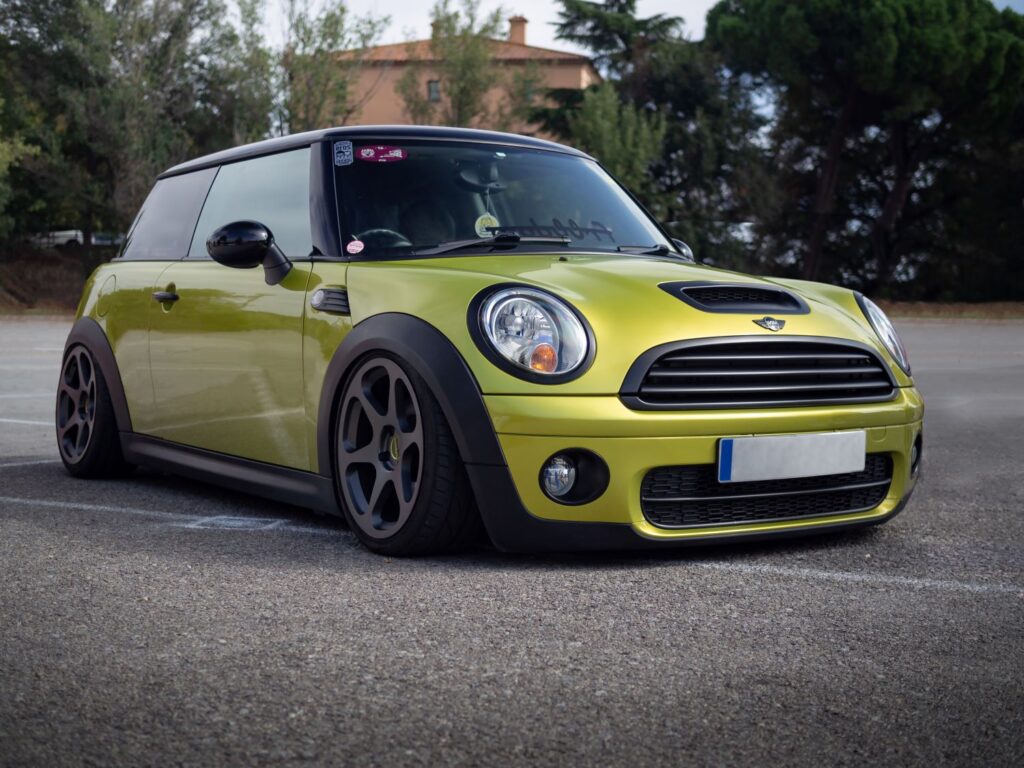
After the success of the first generation MINI R53, 2006 saw the launch of the car that has arguably gone on to become the most ‘moddable’ of them all: the second-generation MINI R56.
Available new up until 2013, the Cooper and Cooper S (along with the world-beating John Cooper Works and limited edition JCW GP model) have proved their worth not just on the road, but also on just about every circuit in the world.
It’s easy to see why these MINI cars remain so popular; the R56 offered a whole lot more space than the previous model, along with a new 175bhp turbocharged 1.6-litre ‘Prince’ N14 engine (capable of 0-62 in 7.1 seconds) for the Cooper S. What we’re looking at, then, is a hard-hitting package for the most avid performance fans, as well as for those hankering after a stylish, economical and well-equipped Cooper-badged model with a lively, naturally aspirated 120bhp and a 0-62 time of 9.1 seconds.
Almost inevitably, the R56 facelift came along in 2010, seeing a whole load of upgrades across the range – not least a new 1.6-litre BMW N18 engine for the Cooper S, providing 184bhp, a 142mph top speed, and a 0-62 time of 7-seconds dead.
And of course, that’s not the whole story either. Let’s not overlook the base-model 1.4-litre MINI One, the selection of 1.6 and 2-litre diesel variants (including the Cooper D and Cooper SD), the budget MINI First, and even an ‘environmentally friendly’ version – the MINI One Minimalism.
But, what does this mean for the modified car fanatics out there? Well, it simply means you have far more choice – and the ability to shop around when looking for your perfect partner. From a modification standpoint at least, the truth about the second generation MINI is that they’re all very similar. In fact, aside from the heavy tuning stuff, you’re not simply limited to the Cooper S if you want to build yourself something truly special. With second-hand prices ranging between £600 for an early MINI One to £20,000 for a late John Cooper Works GP, there really is something out there for everyone.
So, no matter which model you choose, here’s our guide to getting the best from your second generation MINI with our pick of the ten greatest MINI mods of all time that you can do yourself or get done from a range of tuning and modification specialists in the UK.
Before you dive into modifying your R56, make sure you read our article on how popular modifications affect your car insurance and which car modifications are legal so you’re aware of what to expect.
1. Air filter upgrades
Image source: Adobe Stock
It’s not just the MINI range – an air filter upgrade is perhaps the most popular tuning mod for any car, so there will certainly be plenty of performance filters and intake kits available for yours.
At its most basic level, tuning is all about airflow. The more air – or, more specifically, oxygen – you can cram into the cylinders, the more fuel that can be burned. This results in a bigger bang and ultimately more power.
Modern fuel-injected cars utilise a panel filter contained within the standard airbox. As the engine sucks in air from the atmosphere, this filter catches particulates to prevent them from entering the cylinders and causing damage. Standard filters are made from paper and designed to be replaced at every service interval, but while paper is cheap and ideal for filtration, it tends to restrict airflow more than other materials.
What’s also important here is that, as the clean, filtered air exits the airbox (before it enters the engine), the volume is monitored by the mass airflow (MAF) sensor, which tells the ECU how much fuel should be delivered. Essentially, this is directly proportional to how much power the engine can produce.
Aside from filtering out the particulates, the job of a performance air filter is simply to allow more air to flow through. As you’d expect, this increased volume of cleaned air is monitored by the MAF and matched with increased fuelling to produce more power. In essence, a performance filter (which will typically be made from foam or cotton gauze) allows your engine to breathe more freely.
Direct-fit panel filters
Direct-fit panel filters are usually the first port of call, simply because they can be installed into the standard airbox in a matter of seconds. These are available from reputable brands, such as Pipercross and K&N, and typically see gains of 3-4bhp. Unlike paper filters they should never need replacing. In fact, as they’re priced at around £40, technically they pay for themselves over a car’s lifetime.
Upgrading the airbox
By nature, the standard airbox also creates a restriction, but this is a trade-off between airflow and protecting the filter from under-bonnet heat. Hot air contains less oxygen by volume, and this means that it will actually lose you power. For this reason, a popular original equipment manufacturer (OEM) upgrade for the Cooper S is installing a second-hand airbox from the John Cooper Works (JCW) model, simply because it allows greater airflow. Combined with a performance panel filter, it’s an effective and relatively cheap upgrade.
Turbocharging MINI Cooper performance models
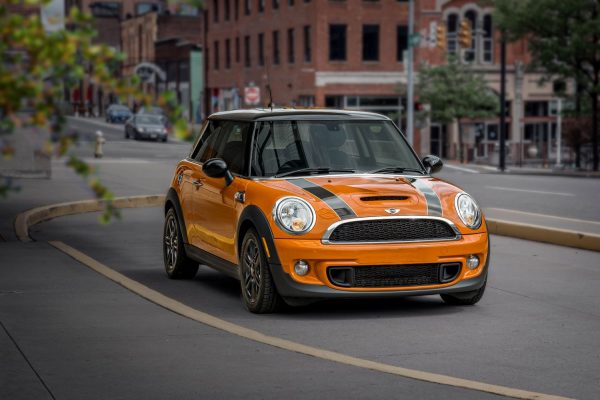
Image source: Lance Anderson via Unsplash
The ultimate solution for the turbocharged performance models – especially where airflow becomes the priority to allow for further tuning such as turbo upgrades – is a specially designed cold air intake. These help the engine produce a few more horsepower and, although they vary in design, the basic idea is to utilise a larger cone-type filter rather than a flat panel. The shape allows for a higher effective surface area, which in turn increases the potential for better airflow.
There’s a range of top-quality cold intake kits available, but perhaps the most renowned by Cooper S and JCW enthusiasts comes from tuning specialists AEM. Their all-in-one intake system not only utilises a large cone filter contained within its own high-flow airbox, but it also bolts directly to the bonnet scoop to pick up the maximum volume of cold, oxygen-dense air. At around £600 it’s not the cheapest option out there, but it is dyno proven for gains of around 20bhp.
2. Performance exhausts and sports cats
If your air filter limits your MINI breathing in, think of your exhaust system as controlling the rate at which your MINI is able to breathe out. In tuning terms, it’s just as important to get the waste gases out of the cylinders as quickly and efficiently as possible as it is to cram the air in.
The science behind exhausts is long and complex, but the main point here is that standard exhausts offer all sorts of restrictions to the optimum gas flow, typically through the bends, silencer boxes, resonators, and the relatively small diameter bore. Being constructed from mild steel, they’re also particularly susceptible to failure brought on by corrosion.
Technically speaking, for maximum performance gains, a freer flowing exhaust of a larger bore that’s optimised for flow will inevitably free up more horsepower. In an ideal tuning world, of course (at least on a turbocharged car like the Cooper S), you’d have a straight pipe with no bends, silencers or resonators… but obviously that’s not possible, partly because of the route that the exhaust has to take under the car, and mostly because it would be horrendously noisy. Instead, all exhaust systems – standard or otherwise – are designed with a trade-off between power potential, noise, and manufacturer costs.
The truth is that, as OEM items go, the standard MINI Cooper S exhaust is well designed and the JCW unit is even better when it comes to optimising gas flow. For a start, it’s straighter than the system on most other cars because of the centre exit configuration. But this doesn’t mean that the setup can’t be further improved for better flow and longevity by going aftermarket. There are slightly more bends in the layout of the naturally aspirated models of course, but that only makes these even more ripe for improvements.
Stainless steel ‘cat-back’ replacements
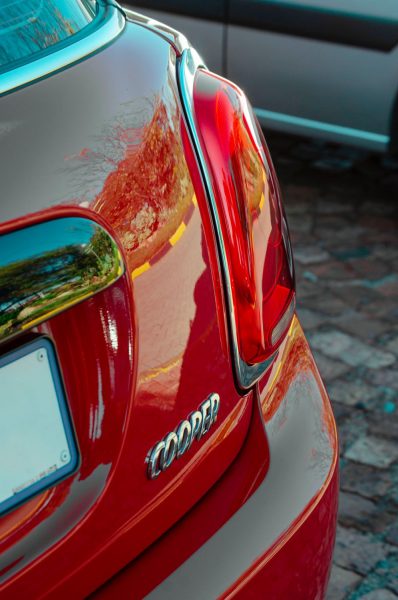
Image source: Ryno Marais via Unsplash
Stainless steel ‘cat-back’ replacements from high-end manufacturers such as Scorpion Exhausts and Milltek are extremely popular. These are optimised over standard with a smaller, high-flow rear silencer (known as the back box) and a larger diameter bore, and they do away with the centre resonator altogether for better flow and to produce a far throatier tone. For many MINI owners, the performance ‘grumble’ these performance systems offer is just as important as a mild horsepower hike. In fact, if there’s only one mod you’re considering, it’s probably this one.
As with most modern petrol cars though, the real sticking point is the catalytic converter, more commonly known as the catalyst, or cat. This is the part that converts the poisonous exhaust gasses into less harmful C02. Of all your exhaust system components, this will be the most restrictive because the cat contains a huge number of special cells that the exhaust gas has to weave its way through on the way out. The cross-section is not unlike a piece of honeycomb and, as you can imagine, that serves up quite the restriction. So, in an ideal performance world at least, you’d simply replace the cat with an unrestricted pipe, or a ‘de-cat’. More gas flow equals problem solved, right? Well, yes, unless you actually want to drive on the road…
Unfortunately, UK MOT regulations require a catalytic converter to be in place and it’s inspected both visually and through the dreaded emissions test. This means that, while it is perfectly legal to buy and fit a de-cat for track use (the prices for which start at around £150), the only road-legal solution in terms of performance is to upgrade to a sports cat.
Upgrade to a sports catalytic converter
A sports cat is a high-flow catalyst designed with a limited number of cells (typically 200 or sometimes 100). These still promote the reaction to create CO2 and are developed to reduce emissions to MOT standards, but they also serve up much less of a restriction to the overall gas flow. You’ll also find that these tend to be far more popular over performance exhaust systems for serious tuners, and they’re often included in the package by companies offering comprehensive Stage 2 tuning bundles.
Specially developed by the bigger manufacturers – such as Scorpion Exhausts, Cobra Sport Exhausts, and Akrapovic – sports cat prices range from around £350 to £1,000 depending on design and flow rates.
3. Stage 1 remaps
Traditionally, any car with BMW DNA – of which the R56 MINI certainly fits into that category – responds well to remapping. So much so that a basic Stage 1 map on a Cooper S or Cooper D will yield as much as 30-40bhp, with no other mods. And let’s not forget that it’s a quick and simple plug-in job through the OBD2 (diagnostic) port. There’s also – albeit lesser – gains to be had across the rest of the R56 MINI range.
There’s a good reason that MINIs love a remap – it comes down to their extensive distribution and, in many cases, worldwide popularity. Remapping is all about optimisation for the given conditions. Standard software is designed to compensate for a number of variables, to keep the engine safe in the most extreme conditions.
In other words, your MINI has to operate just as reliably at -40°C in the Arctic Circle as it does at 40°C in the Middle Eastern desert. There are also other safeguards for altitude (less oxygen in the air means that fuel doesn’t burn quite so keenly) along with poor quality low octane fuel and a lack of good quality parts for basic servicing. Basically, all the problems that we’re unlikely to come up against here in the UK.
A stage 1 remap is designed to optimise the engine parameters, such as timing, fuelling, ignition, and turbo boost (when applicable), to make the most of the driving conditions in that particular area. This is where you see the extra power released. In some cases, you may even get more MPG due to the cleaner fuel burn… that is assuming you don’t change your driving style because you’ve just bagged a whole load of extra horsepower!
Can a stage 1 remap damage the vehicle?
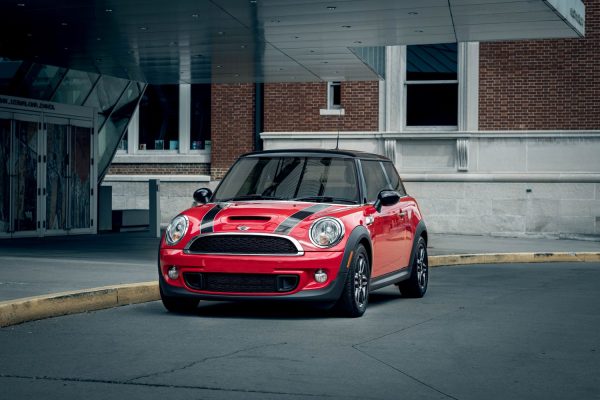
Image source: Lance Anderson via Unsplash
As for whether a software mod like a stage 1 remap will damage your engine, the answer is that it’s highly unlikely. Assuming the service schedule is kept to and the engine is in good condition without a million miles on the clock, a stage 1 map is a mild software tweak designed to remain well within engine tolerances. You just have to bear in mind that the rest of the drivetrain components have to be up to the job too.
Drivetrain problems on the MINI are rare because they’re slightly overengineered from the factory to be able to stand up to significant power increases over standard. That said, there are circumstances for any car where the drivetrain can become the weakest link. If, for example, your clutch is worn and already on its way out, any significant torque increase could tip it over the edge. For the most part, though, a stage 1 remap is a great way to safely increase power and torque with minimum effort.
4. Stage 2 tuning packages
If a stage 1 remap is about optimising the engine parameters from the factory, further mapping is a way to optimise the settings for other bolt-on modifications. In fact, past the first stage of mapping, the software is written to adjust engine settings so far that they actually require these hardware modifications to make the claimed power. It’s a symbiotic relationship between hardware and software, and again, much of the process is down to safely matching increased airflow with the optimal amount of fuel.
While it’s true that bolt-ons – such as a freer-flowing performance exhaust – sports cats and high-flow filters will yield a small power hike on their own, the ECU can only adjust so far when it’s solely relying on the standard vehicle sensors. To make the most of the extra airflow through the engine, a stage 2 remap is designed to optimise the fuelling and timing to yield the optimum power output. But there are safety concerns for the most highly tuned engines.
What to consider before you get a stage 2 remap
Engines working harder get hotter, so while a stage 2 remap on a Cooper S model will yield significantly more power due to the increase in turbo boost, it will also require an uprated intercooler to keep the charge temperatures at an acceptable level. Uprated high-flow intercoolers designed for more efficient cooling are available from performance parts specialists such as Forge Motorsport and AIRTEC. Prices start at around £500.
You can buy all these bolt-ons separately of course, but you’ll also find that many companies offer complete stage 2 tuning packages that contain all the hardware required, along with the software to optimise their performance. A stage 2 setup with MINI specialist A Reeve Performance can yield 250-270bhp with 340-360Nm of torque on earlier Cooper S models fitted with the N14 engine, and 260-280bhp with 350Nm on later cars with the N18 engine. In both cases, the software is designed to cap the torque figure so it isn’t too much for the standard clutch to handle.
5. Stage 3 turbo upgrades

Image source: Dmitry Strelkov via Unsplash
On the turbocharged variants at least, that’s not where the hardware tuning has to end. When a car comes with forced induction, there’s always the opportunity to wind up the boost beyond the limits of the original turbo. Let’s say you’re looking to upgrade your Cooper S to around 300 horsepower, you’ll be heading quickly towards a Stage 3 tune, which will throw an uprated turbocharger into the mix.
There are various approaches aimed at different budgets here: a hybrid turbo, aftermarket bolt-on kits that contain a larger turbocharger, or, in some cases, upgrading the standard Cooper S turbo to the higher-boosting unit found in the JCW model. But the goal is always to install a turbocharger capable of producing more boost than standard, or, more specifically, a turbocharger capable of forcing more pressurised air into the engine.
Again, when fitting a higher boosting turbo, the software must be upgraded to make the most of the extra airflow, so a stage 3 (or higher) map would be required to adjust the fuelling and other parameters.
But even so, the final power output will always depend on the amount of boost that the turbo is physically able to produce, and this will always vary between the different upgrade types. A JCW turbocharger may not create as much boost pressure as a hybrid turbo, and a hybrid may run out of puff before a kit with a larger turbo, and this all comes with a significant trade-off in costs.
If you’re looking for the highest power figures, MINI specialist Lohen offers a popular bolt-on Stage 3 Big Turbo Kit capable of making around 320bhp and close to 400Nm of torque. This kit is around £1,650, but you’ll also have to budget £600 for the stage 3 software… and it only works with an AEM Cold Air Intake.
What to consider before you get a stage 3 upgrade
Always bear in mind that, as the boost goes up, so does the power – and so does the risk of failure from the standard engine internals. It goes without saying that any upgrades should be performed on a healthy engine but even then, most specialists recommend rebuilding the engine with stronger, fully-forged internals when taking boost beyond the 20-21 PSI mark (the standard turbo on the stock map only boosts to around 12 PSI). Fitting forged pistons and rods isn’t a cheap process though, and you’ll need to find a specialist. It may keep your engine safe at higher power levels, but you’re looking at a bill well into the thousands to put it all together.
At this stage, there’s also the question of the clutch. By most accounts, standard Cooper S clutches are good for up to 400Nm of torque (and around 450Nm on the JCW models), but by now many MINI owners will already be looking at an upgrade, especially for harder driven vehicles. Some of the best performance clutches for the MINI can be found at Helix Autosport and Sachs Performance, with prices starting from around £350.
The last question here is, if you haven’t got a turbocharged MINI, is an engine swap a viable option? Well, we’ve seen many engines transplanted into R56 MINIs over the years – everything from Honda VTECs to BMW V8s – but there’s no doubting that it’s a costly affair. Upgrading to a Cooper S engine in a Cooper or One model is also possible, but then again, the fact that you can buy a whole Cooper S for under £2,000 nowadays, makes all that expense and effort pretty redundant.
6. Suspension upgrades: coilovers
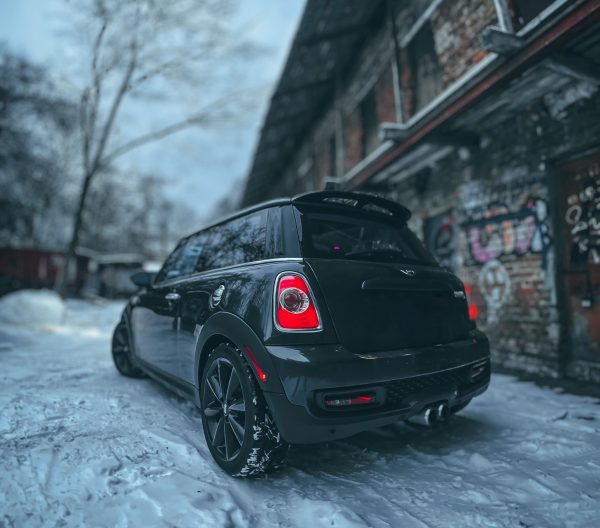
Image source: Erwi via Unsplash
Let’s not forget that it’s not all about power though. The MINI is renowned for its go-kart handling and there are many, many suspension upgrades available to make it drive even better – or at least provide the improved looks associated with a drop in ride height.
These chassis mods aren’t limited to the Cooper S and JCW models either; they cover the entire range. In fact, with everything from high-quality 25mm lowering springs available from Eibach to air suspension kits from the likes of Air Lift Performance, it’s difficult to know where to start.
The key questions are:
What are you looking for with regards to handling or looks?
How much would you like to spend?
A set of springs will start at around £150 and air ride kits around £4,000. Just don’t forget that the ultimate performance isn’t the main goal for many when selecting suspension for their MINI.
When handling performance is the priority, however, perhaps the most popular suspension upgrade is a set of coilovers. Derived from racing suspension systems, these bolt-on upgrades offer the sought-after height adjustability that many MINI owners crave, along with the ability to tweak the damping settings for a decrease in body roll through the corners and less dipping and ducking during acceleration and braking.
Remember to do your research
The key with coilovers is to do your research when it comes to getting the right brand at the right price. Many kits are available for the R56 MINI, and you can get one for as little as £250. That being said, you get what you pay for. If you’re not worried about cornering and you only want to lower your car as much as possible – and as cheaply as possible – for aesthetic purposes, choosing a kit with a low price tag is fine. But it’s worth noting that a cheap kit probably won’t last all that long either.
If you’re looking to push the handling performance into the realms of the circuit racer, a set of coilovers from a reputable company such as ST Suspensions, Bilstein or BC Racing will start at around £800. It’s notable that the GP model came with a set of Bilstein coilovers as standard. KW Suspensions are also infinitely popular with MINI owners and they stock a full range of uprated setups aimed at every niche of the market – everything from basic road kits right up to those designed for track days and club motorsport.
7. Chassis upgrades: brakes and bushes
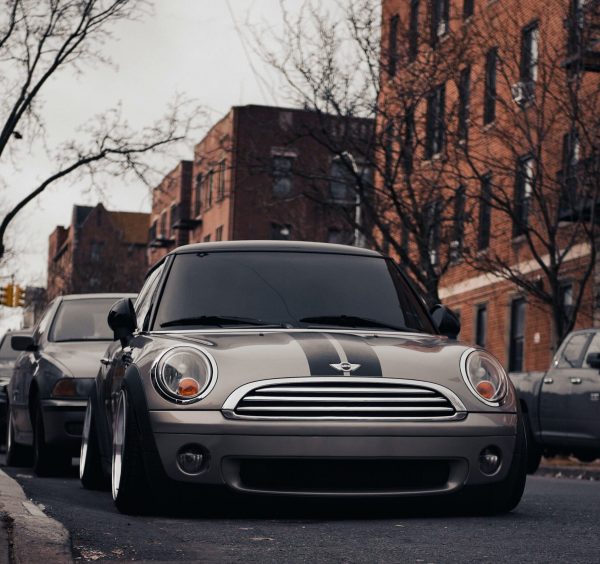
Image source: Cody Campbell via Unsplash
Other supreme chassis upgrades for all models range from uprated polyurethane bushes and strut braces to full-on roll cages, and all have their place in stiffening the chassis for better handling.
A set of ‘polybushes’ from Powerflex or SuperPro is a well-documented upgrade for the R56 MINI, simply because the stock rubber bushes are known to perish and degrade over time, particularly on cars that are regularly driven hard. Polyurethane bushes won’t perish and are stiffer than rubber, helping to hold the suspension geometry and eliminate flex through the most extreme cornering. A full set for the MINI can be had for under £250, and there’s various stiffness options to choose from.
More extreme suspension stiffening solutions, such as strut braces and roll cages, further eliminate flex by triangulating and stiffening key chassis points. The only question is: how far do you want to go? Strut braces are available from various manufacturers, such as OMP, for around £140, and roll cage prices start from around £500 for a bolt-in rear cage and can go up to about £2,500 for a custom weld-in item for racing.
It goes without saying that these can be extremely specialist, but there are many experts, such as SW Motorsports, who are well-versed in the art of fitting and fabrication on R56 race cars.
All this said, arguably the most important chassis upgrade of them all – and the one that makes our top 10 – is uprated brakes. After all, better brakes not only make your MINI safer, but they also make it real-world faster!
Consider investing in a set of fast road brake pads
Many owners have reported that a set of fast road brake pads from EBC Brakes or TAROX Performance Brakes are a worthwhile upgrade to significantly increase the stopping power, but it doesn’t have to end there. Matching your uprated pads with a set of direct-fit, uprated discs will further improve your ability to pull up quickly and safely.
Uprated discs come in all sorts of configurations, but perhaps the most popular are those with a grooved friction surface. These are designed to deglaze pads and help the gases that cause brake fade escape more efficiently.
Of course, fitting larger diameter discs and multi-piston calipers always provides the ultimate brake upgrade, and the aftermarket serves the R56 MINI extremely well. All the big names, such as AP Racing, KSport, TAROX Performance Brakes, and Yellow Speed Europe, offer big brake kits in various sizes that start at around £1,000. There are plenty of other options out there, too. Just make sure your wheels are big enough to house them!
Once again, there are also the OEM upgrades, the best of the bunch being fitting the discs and Brembo-made calipers from the JCW MINI to the Cooper or Cooper S – a straight-swap that’s proved infinitely popular over the years. Right now, you can find a set of JCW calipers on the second-hand market for around £500.
8. Interior upgrades: replacement seats
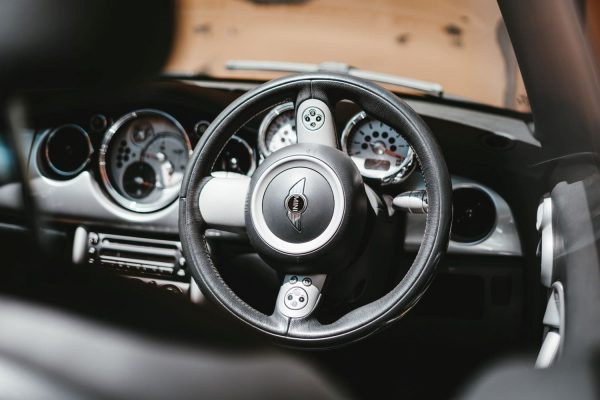
Image source: Julian Hochgesang via Unsplash
There’s no denying that the funky R56 car interior is one of the aspects that made it extremely popular. Again, one of the most common upgrades in the MINI community is simply to make the most of the wealth of OEM solutions on the second-hand market.
Taking the sports seats from a Cooper S or even a JCW and fitting them to a base model MINI will always be a great upgrade – after all, they bolt straight in and offer more support right out of the box.
Then again, there’s ultimate, and then there’s ultimate, and perhaps the most sought-after OEM upgrade is the £3,000 Recaro seat option originally offered in the JCW. It’s no surprise that not many JCW buyers ticked that particularly expensive box at the dealer, but that’s translated directly to their availability now. If you can actually find some, we hope you have deep pockets!
The good news is that, with a set of direct-fit seat rails from around £200, aftermarket seats are extremely easy to bolt in, and arguably offer the best support for fast-road and track use. Many MINI owners look to manufacturers such as Cobra Seats, Recaro and Corbeau to find their perfect perches, and you’ll find a set of fixed-back bucket seats or adjustable recliners for just about every budget.
9. Styling upgrades
For most MINI owners, body styling is kept with a degree of subtlety in mind. With such handsome looks from the factory, it’s easy to see why. That said, there are a few cheap and easy options… along with some that will set you back a whole lot more.
Again, the OEM upgrades – more specifically the MINI Aero Kit originally fitted to JCW and the rare GP models – are an extremely popular choice. The GP rear diffuser is particularly revered in the MINI community and available – brand-new – for £422 from Lohen. They also offer the aerodynamic GP front undertray, giving your Cooper S some actual useable aero!
Elsewhere, other reputable specialists, such as RSI C6, manufacture a whole selection of parts, from spoilers and flared arches to carbon fibre door handles and bonnet scoops. But perhaps the maddest in the business is the famous Stanceworks kit from Liberty Walk. We’re not suggesting that this crazy 8-piece widebody kit is for everyone – starting at £4,690, it’s certainly priced on the exclusive side too. But, if you’re looking to build the ultimate show car, it may be an option.
10. Wheels and tyres

Image source: OSX via Wikimedia Commons
It’s safe to say that, of all our top upgrades, changing alloy wheels has to be the number one for popularity. The thing about wheels, though, is that they’re a deeply personal choice. There are literally hundreds of designs and sizes out there, some proving way more popular than others. So, with that in mind, we can’t make the choice for you here – but we can certainly help you along the way with all the relevant info.
All second-generation MINIs – including the Cooper S and JCW models – use wheels with a 4×100 stud pattern. Standard wheels range in sizes between 5.5×15-inch and 7×18-inch, with offsets from around ET45 to ET52, and, basically speaking, they’re all interchangeable. This means that, if you’d like to put a set of GP2 or JCW wheels on your MINI One, you can. In fact, many people do.
Predictably, however, OEM options aren’t the most popular in the MINI community – that’s the reserve of the aftermarket. This is simply because there are many, many 4×100 wheels out there – it’s actually one of the motoring world’s most common stud patterns and covers everything from Vauxhalls and Datsuns to Hondas and VWs.
There are plenty of options when it comes to wheels
In fact, over 850 different car models use 4×100 wheels, so they’re not exactly hard to find. Just keep an eye on those offsets, and remember that the lower the ET number, the more they’re going to poke out and risk rubbing your arches. Offset is vital when choosing alloys for your MINI.
As they say in the wheel world, anything is possible, and we’ve seen everything from 8.5×15-inch wheels to 9×19-inch monsters fitted to R56 MINIs. The recommended range by most manufacturers and enthusiasts is as follows:
diameters between 16 and 18 inches
widths between 6.5 and 8.5 inches
an offset range of ET35-55
Some of the more popular ‘practical’ fitments include:
8×17-inch (ET35) with 215/45×17 tyres
8×17-inch (ET40) with 195/40×17 tyres
7×18-inch (ET38) with 215/35×18 tyres
As with all ‘plus sizing’ exercises, tyre size is critical and will vary according to the wheel you choose. As the wheel diameter goes up, the tyre sidewall must have a lower profile to physically fit under the arches. For the most aggressive fitments with wider wheels and tyres, suspension and arch modifications may also be necessary. What’s more, everything also depends on if you have lowered your car in the first place.
In short, it really does pay to do your research before making your wheel choice, but the good news is that all manufacturers and their dealers will be happy to help with advice on what fits your car and – most importantly – what doesn’t.
Remember to take out modified car insurance for your MINI
Decided to take the plunge on a few of the modifications in this list? Whichever modifications you choose, make sure you take out modified car insurance. At Adrian Flux, we cover all types of modifications and can do this on a like-for-like basis or offer agreed value cover. We also offer tailored car insurance for modified MINIs. Call us on 0800 081 0777 for a free, no-obligation quote.







